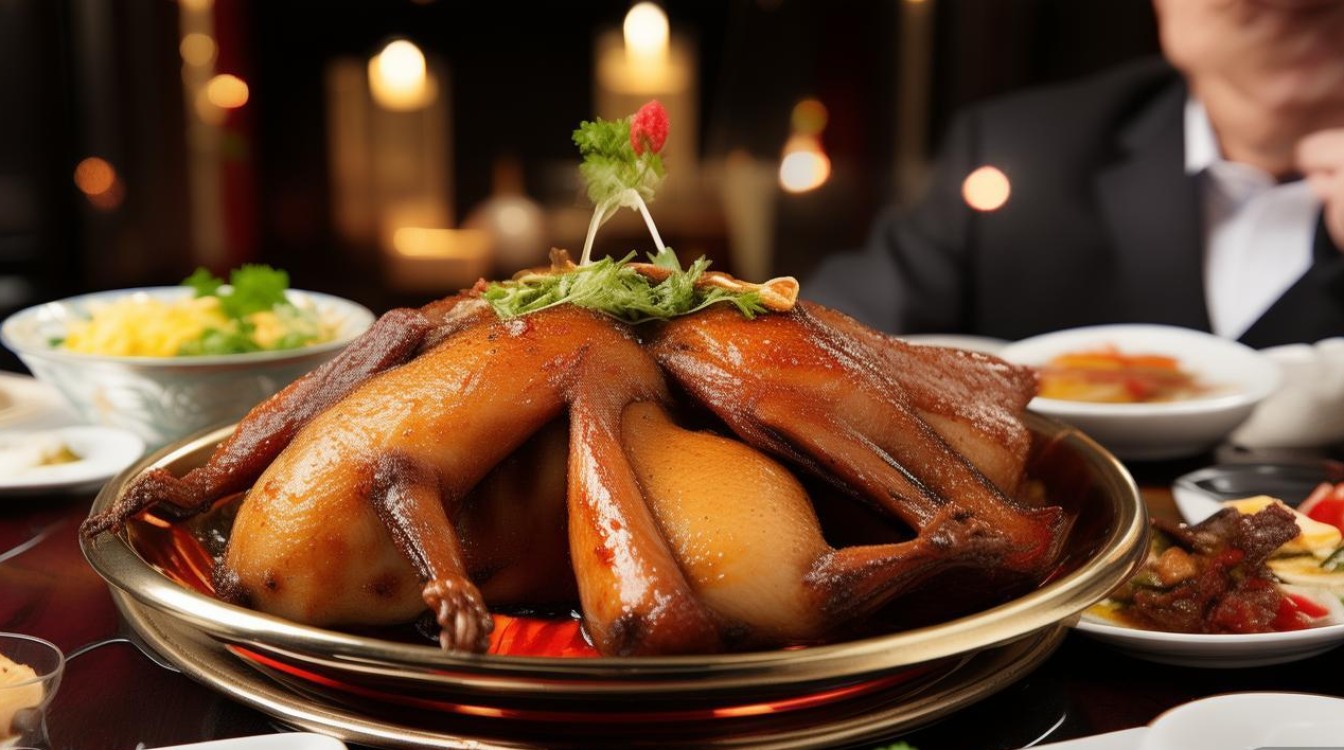The Art of Savoring Peking Duck: A Culinary Journey
Peking Duck is more than just a dish; it is a culinary institution, a symbol of Chinese hospitality, and an art form that has delighted emperors and food lovers for centuries. To experience it to its fullest is not merely to eat, but to participate in a time-honored ritual. Here is a guide to the traditional way of enjoying this iconic delicacy.

Step 1: The Grand Unveiling
The experience begins before the first bite. The whole, glistening duck, with its burnished, mahogany-colored skin, is presented at the table on a wooden cart. The chef skillfully carves the bird into precise slices, separating the succulent skin from the tender meat. This theatrical display is the first act of the performance, building anticipation for the feast to come.
Step 2: The Assembly – Creating Your Perfect Wrap
The heart of the Peking Duck experience lies in the art of the wrap. At your table, you will find a collection of essential components:
- The Pancakes (Bing): These are thin, delicate, and slightly warm flour disks, the canvas for your creation.
- The Scallions (Cong): Fresh, white stalks with a mild, pungent bite.
- The Cucumbers (Huanggua): Cool, crisp, and refreshing slices.
- The Sauce (Jiang): A rich, dark, and savory bean sauce, often with a hint of sweetness.
The process is simple but requires a gentle hand. Take one pancake and lay it flat. Using a small brush or a spoon, apply a thin, even layer of the bean sauce in the center. Next, add a few slices of scallion and a couple of pieces of cucumber. Now, for the star of the show: place a slice of duck skin, ideally with a small piece of attached meat, on top of the vegetables.
Step 3: The Masterful Roll
With the fillings in place, it's time to roll. Gently fold the bottom of the pancake up over the fillings, then tuck in the two sides. Finally, continue rolling upwards to form a neat, compact package. The goal is to create a perfect balance where no single ingredient overpowers the others.
Step 4: The First Bite – A Symphony of Flavors and Textures
Now, take the first bite. It is a moment of pure bliss. You experience a symphony of sensations all at once:
- The Crackle: The thin, roasted skin shatters with a satisfying crunch.
- The Richness: The rendered fat from the skin melts in your mouth, releasing an incredibly rich and savory flavor.
- The Tender Meat: The underlying meat is moist, tender, and full of a subtle, gamey flavor.
- The Freshness: The cool, crisp scallion and cucumber provide a refreshing contrast that cuts through the richness.
- The Umami: The savory sauce ties all the elements together, enhancing the duck's natural flavor.
Beyond the Wrap: The Remaining Treasures
After the skin and breast meat are enjoyed, the chef will return with the remaining parts of the duck. These are not to be overlooked. The chef can prepare Duck Stir-fry (Sao Ya Rou) with the meat and bones, or create a flavorful Duck Soup (Ya Tang). These dishes offer a different, but equally delicious, way to conclude the meal, ensuring that every part of the bird is celebrated.
In conclusion, eating Peking Duck is a multi-sensory journey that engages sight, smell, touch, and taste. It is a process of creation, where each person becomes their own chef. By following these steps, you not only taste a world-famous dish but also connect with a rich cultural heritage, one delicious wrap at a time.











